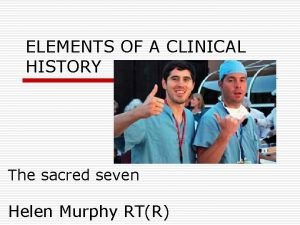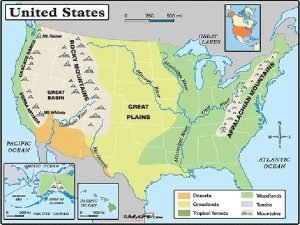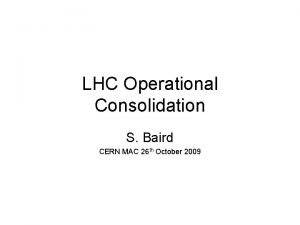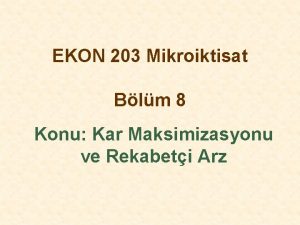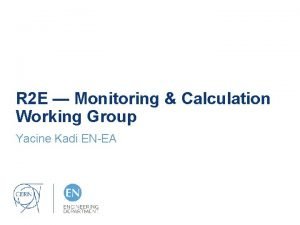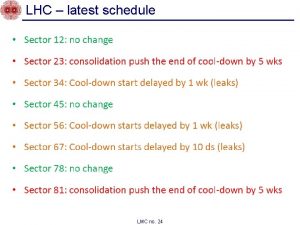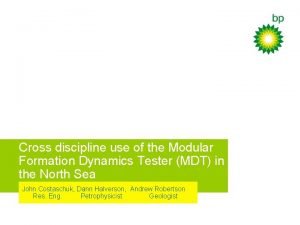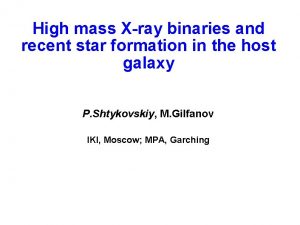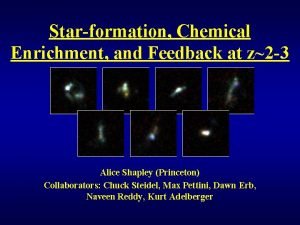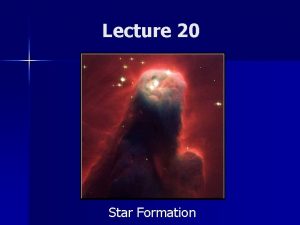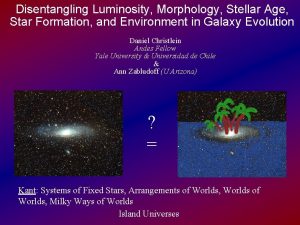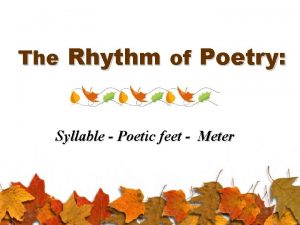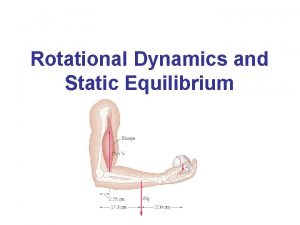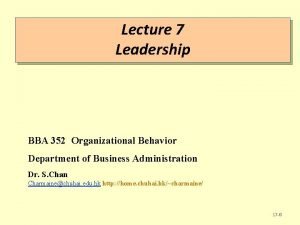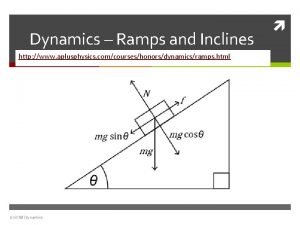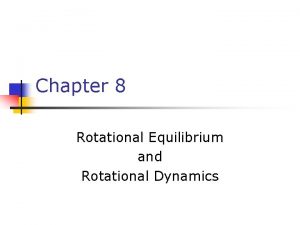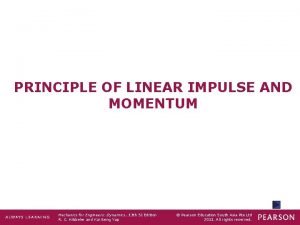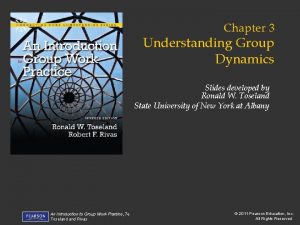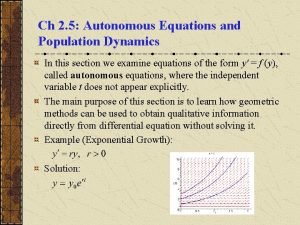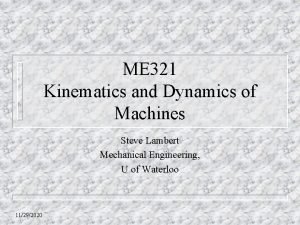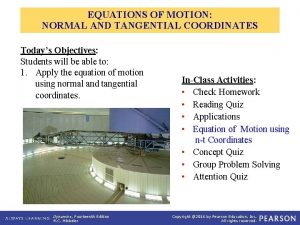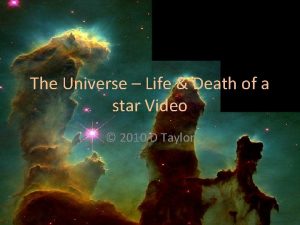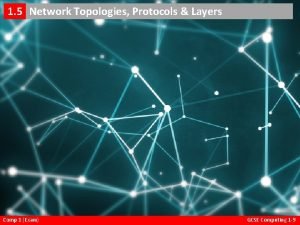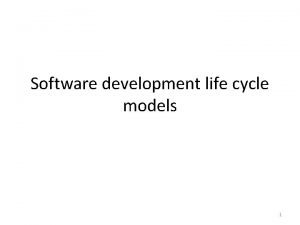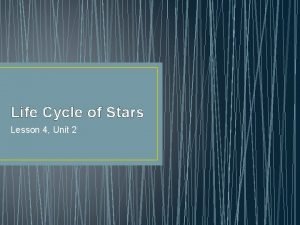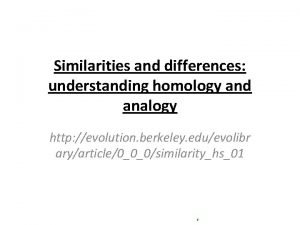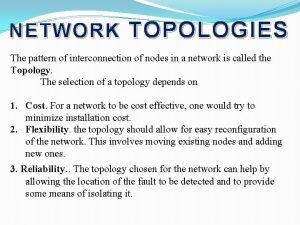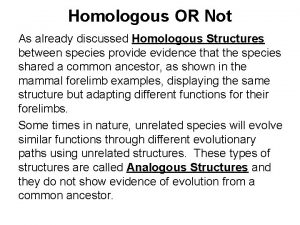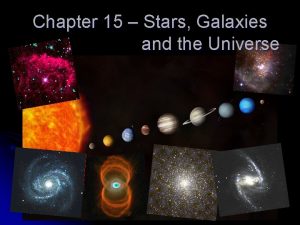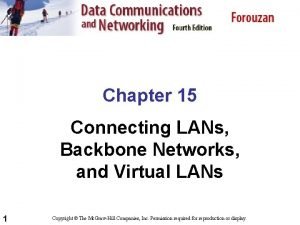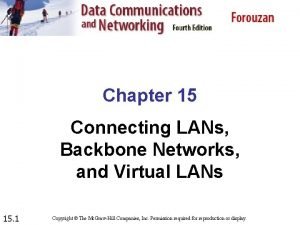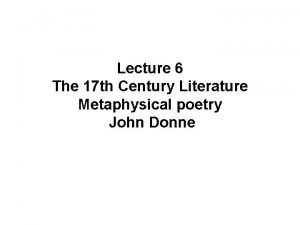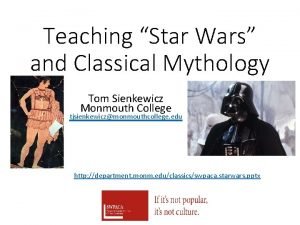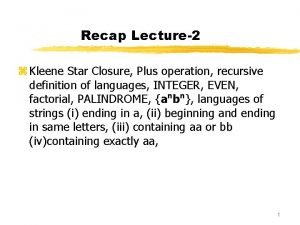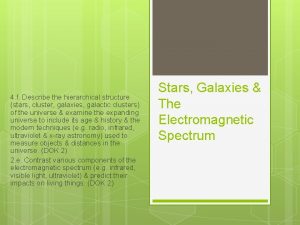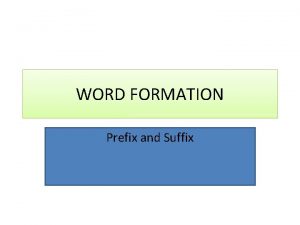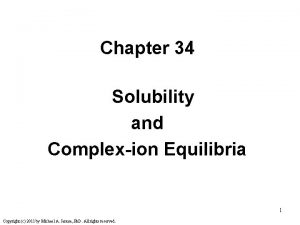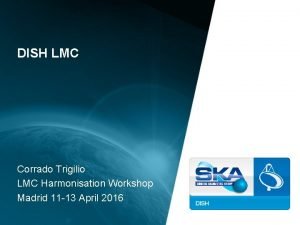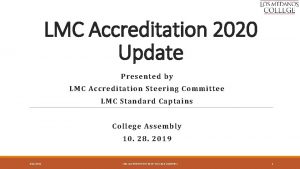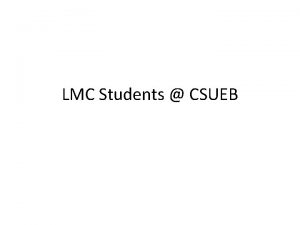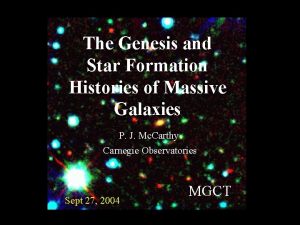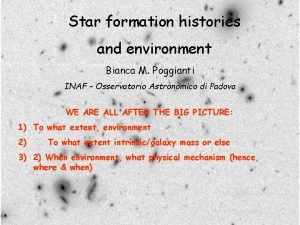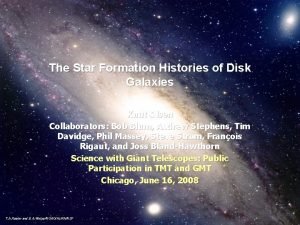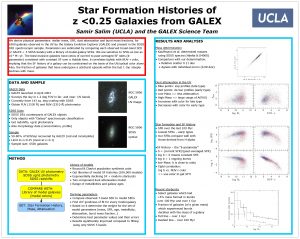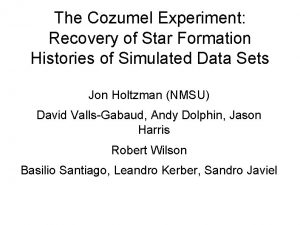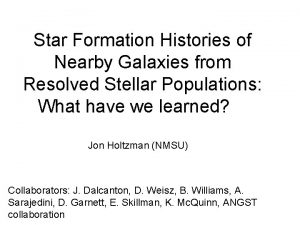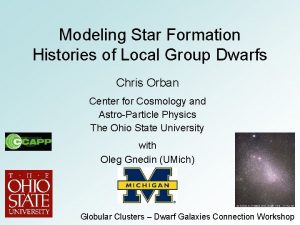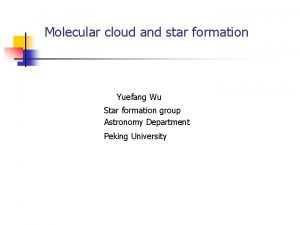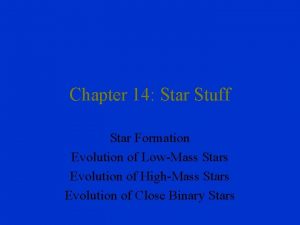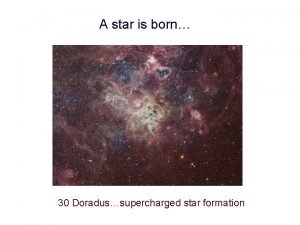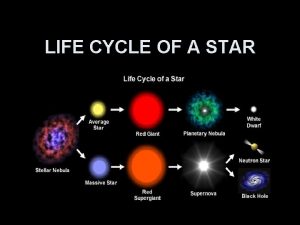Dynamics and star formation histories of the LMC
















































![What is the age gap ? [Fe/H] Age (Gyr) (Da Costa 1991) What is the age gap ? [Fe/H] Age (Gyr) (Da Costa 1991)](https://slidetodoc.com/presentation_image/b5b73d302132d4ec3a28360cb6091c48/image-49.jpg)


































![Properties of the simulated ``power-law’’ stellar halo (Bekki & Chiba 2000, 2001). [Fe/H] e Properties of the simulated ``power-law’’ stellar halo (Bekki & Chiba 2000, 2001). [Fe/H] e](https://slidetodoc.com/presentation_image/b5b73d302132d4ec3a28360cb6091c48/image-84.jpg)







![The present status of ``the age gap problem ’’ [Fe/H] Age (Gyr) (Rich et The present status of ``the age gap problem ’’ [Fe/H] Age (Gyr) (Rich et](https://slidetodoc.com/presentation_image/b5b73d302132d4ec3a28360cb6091c48/image-92.jpg)



![No age gap in the SMC ? LMC GC [Fe/H] SMC GC Age (Gyr) No age gap in the SMC ? LMC GC [Fe/H] SMC GC Age (Gyr)](https://slidetodoc.com/presentation_image/b5b73d302132d4ec3a28360cb6091c48/image-96.jpg)






















- Slides: 118

Dynamics and star formation histories of the LMC and the SMC. LMC SMC Kenji Bekki (UNSW, Australia)

Anniversary in Vienna 2006. • 250 th anniversary of Mozart’s birth.

Anniversary in Vienna 2006. • 250 th anniversary of Mozart’s birth. • 10 th anniversary of the discovery of ultra-compact dwarfs (UCDs). • 40 th anniversary of the publication of a paper by Mc. Gee & Milton (1966) on the LMC’s HI.

The Magellanic saga ~10 Gyr ago 3~4 Gyr 1. Dawn ~0. 2 Gyr 3. Restoration 2. Hibernation 4. Inferno

The Magellanic saga Dawn Hibernation ~10 Gyr ago Restoration 3~4 Gyr Inferno ~0. 2 Gyr

The Magellanic saga Dawn Hibernation ~10 Gyr ago Restoration 3~4 Gyr Inferno ~0. 2 Gyr LMC’s History Old stellar halo & GC formation. Reactivation of GC Formation of 30 Doradus etc…

Can we really understand the origin of physical properties of the Clouds in the context of Galaxy. LMC-SMC interaction ?

A numerical study on the interplay between galaxy interaction and star formation

Galaxy-LMC-SMC interaction.

Today’s topics. • Formation of asymmetric HI and molecular gas distributions in the LMC and the origin of the Magellanic Bridge (MB). • The age gap problem in the LMC and the formation of the stellar ring in the SMC. • Formation of old stellar halos and GC. • Conclusions.

1. The Magellanic Inferno. 0. 2 Gyr ago

1. The Magellanic Inferno: Triggered star formation in the last Magellanic collision. From the LMC Tidal force for the SMC Past From the Galaxy (Gardiner & Noguchi 1996)

1. The Magellanic Inferno. Observations to discuss. LMC SMC • Asymmetric • Structure and distributions of field kinematics of the stars, HI, molecular Magellanic Bridge gas, and young stars. (MB).

Asymmetric HI structures in the LMC. (Column density image of the LMC HI) (Staveley-Smith et al. 2003)

The Asymmetric CO (molecular gas) distribution in the LMC. (Fukui et al. 2001, Mizuno et al. 2001; Kawamura et al. 2006)

Elliptic LMC disk (van der Marel 2001) 21 kpc x 19 kpc Surface number distributions of RGB/AGB stars from 2 MASS

Distributions of young stars. Spatial distribution of Cepheids (Grebel & Brandner 1998)

Were these asymmetric structures formed from the Last Magellanic Collision ?

A hint from numerical simulations. LMC (1) (2) (3) (4) (b, l)=(-32. 89, 280. 46) Distance: 49 kpc (U, V, W)=(-5, -225, 194) km/s Radial velocity: 80 km/s SMC (b, l)=(-44. 30, 302. 79) Distance: 57 kpc (U, V, W)=(40, -185, 171) km/s Radial velocity: 7 km/s

Numerical simulations of the LMC/SMC evolution: Two-hold model • Prediction of the LMC orbit for the last x Gyr (x=1 or 4 or 9) based on the ``backward integration scheme’’. • Grape-5/6 chemodynamical simulations for the predicted orbit(s).

The orbital evolution of the Clouds for the last ~ 0. 8 Gyr. SMC-Galaxy LMC-SMC

Dynamical evolution of the LMC disk (Bekki & Chiba 2006) SMC Gas (SPH) Old stars XZ XZ


Dynamical evolution of the LMC disk (Bekki & Chiba 2006) Gas (SPH) Old stars XZ XZ

Distributions of gas and new stars with ages < 20 Myr SMC Gas (SPH) New stars XZ XZ


B-band surface-brightness distributions of the LMC. Without SMC With SMC (Bekki & Chiba 2006)

The gas distribution of the LMC. East-West Asymmetric distribution. Connected to the MB.

Spatial distributions of young stars with ages less than 20 Myr. A possible formation Site of 30 Doradus ? ? Young stars in the bar

Is the formation of 30 Doradus closely associated with the last Magellanic collision ?

VUV observation Simulation (Young stars) Bar 30 Doradus + R 136 The location of the 30 Doradus can tell us anything about its formation ?

Hints from CO observations: Proto-GC cloud formation in the MC collision ? CO molecule observations by Mopra (Ott et al. 2006): [HI (blue), Ha(red), optical light (green)] Simulated gas density (BC 06).

Structure and kinematics of the Magellanic Bridge (MB). DEC LMC SMC RA (Putman et al. 1998) (Muller et al. 2003)

Formation of stars and HI holes in the MB. HI shell OB associations (Muller et al. 2003)

Formation of the MB. Gas XY LMC XZ


The MB as a tidal tail from the SMC Gas LMC Gas XY XZ

Distributions of gas and new stars in the SMC New stars Gas LMC XY XY



Inconsistency of the simulated MB with observations: No youngs star with ages < 10 Myr. Gas connected to MB. Is this due to the modelled threshold gas density, simulation resolution, etc……. ? New stars

DEC Velocity offset and bimodality in the MB (Muller et al. 2003; 2005). Velocity

Consistency with observations (Bekki & Muller 2006) SMC LMC

Formation of ``the Great Magellanic Arc’’ in the last Magellanic collision. 30 Dor --- Asymmetric HI/CO --- MB --- Wing SF region in SMC

2. The Magellanic Restoration. ~ 3. 7 Gyr ago

2. The Magellanic Restoration. Observations to discuss. LMC • The age gap in the globular cluster system. SMC • The Magellanic Stream (MS). • Stellar ring structures.

The Galactic GCs vs The LMC’s GCs Rc~1. 5 pc Re~10 pc 47 Tuc NGC 1850 Significant differences between the two: More flattened shapes, a larger fraction of binary clusters, Rotational kinematics, disky distribution, a larger size for a given galactocentric radius, and age/metallicity gap.

Two mysteries in the LMC’s GCS. • A high fraction of binary GC candidates (e. g. , Bhatia et al. 1991; Dieball & Grebel 1998; 15 -56% in Dieball et al. 2002). • The age gap problem (e. g. , Da Costa 1991) [NOTE: only one established case and possibly ~ 8% for open clusters in the Galaxy (e. g. , Subramaniam et al. 1995)]
![What is the age gap FeH Age Gyr Da Costa 1991 What is the age gap ? [Fe/H] Age (Gyr) (Da Costa 1991)](https://slidetodoc.com/presentation_image/b5b73d302132d4ec3a28360cb6091c48/image-49.jpg)
What is the age gap ? [Fe/H] Age (Gyr) (Da Costa 1991)

The essence of the age gap problem. • No cluster formation between 3 -12 Gyrs ? ( Why was GC formation reactivated 3 -4 Gyr ago ? ) • Selective destruction/stripping of clusters with ages of 3 -12 Gyrs ? ( What physical processes are responsible for this ? )

Cluster formation from colliding clouds with high relative velocity (V~30 -100 km/s) and small impact parameters (b<0. 25). XY XZ (Bekki et al. 2004 a, b)


LMC’s orbital and morphological evolution.

The age distribution of the simulated clusters. Reactivation of cluster formation through strong dynamical coupling of the Clouds. Bekki et al. (2004 a, b)


The orbital evolution of the Clouds for the last 2 Gyr. SMC-Galaxy LMC-Galaxy LMC-SMC Peri-Galactic passage coincident with the MC encounter.

SMC evolution between T=-2 and -1 Gyr: = Gas = Stars =LMC XY XZ

The discovery of the leading arm features in the MS: The triumph of the tidal model ? ? Observation 1998 Simulation 1996 Leading arm (Putman et al. 1998) (Gardiner & Noguchi 1996) Predicted proper motion consistent with latest observation by HST (Kallivayalil etal. 2006)

Direct comparison between the simulated MS and the HIPASS observations (Connors et al. 2006). Leading arm Feature. (Observation. ) (Simulation. ) Line-of-sight Velocity. (Observation. ) (Simulation. )

Was the ring-like distribution of intermediateage stars formed by the LMC-SMC-Galaxy interaction 1 ~ 2. 5 Gyr ago ? (Harris & Zaritsky 2004). [red; Z=0. 004, blue; Z=0. 001]

Was the ring-like distribution of intermediateage stars formed by the LMC-SMC-Galaxy interaction 1. 5 ~ 2 Gyr ago ? (Harris & Zaritsky 2004).

Formation of a ring-like structure at the epoch of the MS formation (Bekki et al. 2006). T=-1. 2 Gyr T=-1 Gyr Gas New stars

The spatial distributions of field stars with different ages have fossil information on the LMCSMC-Galaxy interaction history.

3. The Magellanic Hibernation. ~ 10 Gyr ago ~ 3. 7 Gyr ago

3. The Magellanic Hibernation. Observations to discuss. LMC • No cluster formation and low SF rate between 510 Gyr ago? SMC • Low star formation rate between 5 -8 Gyr ago?

Long-term star formation histories of the Clouds. SFR Bar Disk Time Older LMC (Smecher-Hane et al. 2002) SMC (Harris & Zaritsky 2004)

4. The Magellanic Dawn. ~ 10 Gyr ago

4. The Magellanic dawn. Observations to discuss. LMC • Kinematical differences between the old stellar halo and the GC system. SMC

Halo vs GC kinematics. • Kinematically hot (Minniti et al. 2003), exponential stellar halo (Alves 2004). • Highly flattened disky GC system with rotational kinematics ? (Freeman et al. 1983).

Rotational kinematics in old GC system in the LMC (Freeman et al. 1983) ? Vrot ~ 41 km/s, s~ 17 km/s

Halo properties: MW vs. LMC • • Power-law No/little ~1% -1. 6 V/s ~ 0. 3 Density profile Rotation Mass fraction [Fe/H] GC rotation • • Exponential ? No/little ? ? ? V/s ~ 2. 4

Formation of the Galactic stellar halo in the CDM model (Bekki & Chiba 2000). Old halo stars formed in subgalactic clumps at high z. Merging/destruction of the clumps and dispersal of the stars into the halo region.

If old stellar halo and GCs were formed in the subgalactic clumps before the hierarchical assembly of the clumps (e. g. , dwarfs) , then…… • No/little kinematical differences between the halo and the GC system ? • Formation of halo GCs with hot kinematics (with little rotation) ?

Formation of stellar halos and old GC systems in dwarf accretion (Bekki et al. 2003).

Hints from observations and simulations. • Low-luminosity dwarfs (in the LG) with no GCs (e. g. , van den Bergh 2000) • GC formation in the epoch of disk formation (Bekki & Chiba 2002). ``GC-less’’ dwarf; Leo A

A possible scenario for halo-GC kinematical differences. • Accretion of GC-less, low-mass subgalactic stellar clumps Formation of the kinematically hot stellar halo. • Merging/accretion of gas-rich clumps onto the proto-LMC could trigger the formation of GCs within the proto-LMC disk.

Differences in ``building blocks’’ between the LMC and the Galaxy ? DM halos at high z GC Gas Field stars Merging The Galaxy formation. Dissipative GC formation ? The LMC formation.

Lessons from the Clouds. Different formation sites and histories between old halos and GCs in galaxies. • GCSs in low-luminosity galaxies show rotational kinematics (e. g. , Olsen et al. 2004). • Physical properties (MDF, kinematics) are different between old halos and GCs in galaxies (e. g. , Harris 2006; Romanowski 2006; Bekki 2006, in GC conference at Concepcion 2006).

Conclusions. • Formation of ``the Great Magellanic arc’’ in the last Magellanic collision ~0. 2 Gyr ago ? • Reactivation of GC formation 3 -4 Gyr ago due to dynamical coupling of the Clouds ? • ``Old GC’’ formation in the formation epoch of the LMC disk ?

Formation of disky GCs in early dissipative gas-rich merging (Bekki & Chiba 2002). Formation of high-density, High pressure gas with P>105 k. B both in the dwarf and the disk. Gas-rich dwarf

Distributions of very young stars. Spatial distribution of Cepheids (Grebel & Brandner 1998)

The Magellanic saga Dawn Hibernation ~10 Gyr ago Restoration 3~4 Gyr Inferno ~0. 2 Gyr SMC’s History Spherical halo Formation ? Formation of the Magellanic stream and the stellar ring. Magellanic bridge formation.

The origin of the age gap problem can be associated with dynamical coupling of the Clouds ~ 4 Gyr ago. • Reactivation of GC formation due to the combined tidal effect of the Galaxy and the SMC
![Properties of the simulated powerlaw stellar halo Bekki Chiba 2000 2001 FeH e Properties of the simulated ``power-law’’ stellar halo (Bekki & Chiba 2000, 2001). [Fe/H] e](https://slidetodoc.com/presentation_image/b5b73d302132d4ec3a28360cb6091c48/image-84.jpg)
Properties of the simulated ``power-law’’ stellar halo (Bekki & Chiba 2000, 2001). [Fe/H] e (orbital eccentricity)

Simulated HI structures and kinematics of the MB (Bekki & Muller).

Distributions of young clusters and field stars. Old GCs (van den Bergh 2000) (HST image of 30 Doradus + R 136)

Formation of the Magellanic Bridge (MB) in the LMC-SMC collision. SMC LMC 30 kpc Time interval = 14 Myr (Bekki & Muller 2006)

Gas evolution between 3 -200 Myr ago and R 136 formation. Observation (Smith et al. 1987) Simulation (Young stars)

Age-dating of GCs (+metallicities) CMD of NGC 2121 from HST • Comparison of theoretical isochrones with the main sequence turnoff (e. g. , Da costa 1991; Rich et al. 2001) • Spectroscopic determination of abundance (e. g. , Olszewski et al. 1991) T=3. 2 Gyr, [Fe/H]=-0. 68 (Rich et al. 2001)

Two modes of star formation. (1) Field star formation based on the Schmidt law (Schmidt 1959) (2) Cluster formation from colliding clouds (Kumai et al. 1993). (3) Discrete gas cloud models. (4) Instantaneous chemical recycling.

(1) Cloud-cloud collision rate (30<Vrel<100 km/s). (2) Star formation rates. (3) Number of newly formed GC. Past Present
![The present status of the age gap problem FeH Age Gyr Rich et The present status of ``the age gap problem ’’ [Fe/H] Age (Gyr) (Rich et](https://slidetodoc.com/presentation_image/b5b73d302132d4ec3a28360cb6091c48/image-92.jpg)
The present status of ``the age gap problem ’’ [Fe/H] Age (Gyr) (Rich et al. 2001)

Distributions of gas and new stars with ages < 20 Myr Gas New stars XY XY


The orbital evolution of the Clouds for the last ~ 0. 8 Gyr. SMC-Galaxy LMC-SMC
![No age gap in the SMC LMC GC FeH SMC GC Age Gyr No age gap in the SMC ? LMC GC [Fe/H] SMC GC Age (Gyr)](https://slidetodoc.com/presentation_image/b5b73d302132d4ec3a28360cb6091c48/image-96.jpg)
No age gap in the SMC ? LMC GC [Fe/H] SMC GC Age (Gyr) (Piatti et al. 2002)

An alternative scenario…. • The LMC’s stellar halo is also flattened (Subramaniam 2005) and has a significant amount of rotation ?

The age distribution of GCs in the SMC (Piatti et al. 2005)

LMC/Dwarf meeting in Vienna. (Rathaus)

Physical properties: MW vs. LMC • • • S(B)bc 3. 5 kpc -20. 9 4*109 Msun. 0. 06 160 • Scale length • Mv • • HI mass • [Fe/H] Number of GC • Hubble type Ir (barred) 1. 5 kpc -18. 5 7*108 Msun. -0. 3 13 (From van den Bergh 2000)

DEC Velocity offset and bimodality in the MB (Muller et al. 2003; 2005). Velocity

Recent development in the tidal model of the MS. Gas • Almost purely gaseous MS for a realistic disk model of the SMC (Yoshizawa & Noguchi 2003). • Reproduction of the spatial and kinematical bifurcation of the MS by the tidal model (Connors et al. 2004, 2006). Stars

From specific to generic. Lessons from the Clouds (I) Formation of intergalatic HII regions. HII Regions. HI gas and intergalactic HII regions in NGC 1533 (Ryan-Weber et al. 2004)

Lessons from the Clouds (II) Formation of young binary star clusters. NGC 5128 Binary GC candidates (230 x 170 pc) (Minniti et al. 2004)

The Magellanic dreams (Future works): Magellanic proper motion and dynamics/SFHs. • Ultimate dreams: The construction of a model explaining everything from GC kinematics to 30 Doradus. • Realistic dreams: The construction of a model for the last 0. 2 Gyr evolution of the Clouds based on future proper motion data sets. Distance Time Magellanic orbits Consistent with proper motion Data (BC 05).

Reconstructing the longterm star formationhistory. • Starbursts for the last ~ 5 Gyrs ? (e. g. , Butcher 1977; Holtzman et al. 1997; Elston et al. 1997) • Different SFH in different regions ? (e. g. , Vallenari et al. 1996; Olsen 1999). • Enhanced star formation rates 4 -6 and 1 -2 Gyr ago (e. g. , Smecker-Hane et al. 2002). • Different histories between field and cluster populations ? (e. g. , Olszewski et al. 1996)


The location of the simulated LMC, its bar etc…

The Magellanic Inferno

The MB formation (Bekki & Muller 2006). • The bimodality in the velocity field of the MB (e. g. , Muller 2006). • The significant differences in structures and kinematics between the northern and southern parts of the MB. (Muller et al. 2005). • Age distributions of young stars along the MB ?

Physical mechanisms for (the largescale) recent star formation history ? • Stochastic selfpropagating SF (SSPSF: Seiden et al. 1979). • Bow-shock-induced SF (de Boer et al. 1998). • Dynamical influence of the off-center bar Vacuum UV image of the LMC (Gardiner et al. 1998). (Smith et al. 1987)

Orbital evolution of the Clouds is everything…. . however, we do not know the details of their past orbits…… We need to know proper motion of the Clouds, the Galactic mass growth history………. .

Open questions. • • • • When and how was the LMC bar formed ? Why does the stellar halo have an exponential radial profile ? What mechanisms are responsible for the thick disk with an elliptic isophotal shape ? Whether or not the SMC tidal effects can be responsible for the disk heating and for the bar formation ? How can we understand the dependences of the LMC’s kinematical properties on the age of stellar populations ? How are the HI arms with peculiar morphologies formed ? How can we understand the origin of 2 D structure and kinematics of HI ? Whether or not starbursts are happened a few or several Gyr ago ? Why are the stellar populations of the bar dominated by younger stars ? What mechanisms are responsible for the abrupt metal enrichment in the LMC disk ? Why are the shapes of LMC clusters so flattened ? What is the origin of the age gap in the LMC cluster system ? Why does the LMC have so many binary clusters ? Why does the LMC cluster system appear to be rotationally supported ? ………. and more…….

The short-term (< 1 Gyr) evolution of the Clouds. a=6 h • The long-term evolution d=-60 of the Clouds for ~ 9 Gyr a=8 h (Bekki & Chiba 2005) LMC and for ~ 4 Gyr (Mastropietro et al. 2005) is numerically costly for this purpose…. • However, there are still wide parameter spaces of d=-90 the simulations…… a=4 h SMC (Simulations BC 06 a)

LMC’s orbital and morphological evolution

Model parameters. • Initial 3 D velocities, masses of the Clouds, gas mass fraction…. . • The size-ratio of the stellar disk to the gaseous one (RHI/Rs ~ 2). The extended HI in NGC 2915 (Muerer et al. 1995) Stellar disk Gas disk

Structure and kinematics derived from different stellar populations. • RR Lyrae (Kinman et al. 1991; Minniti et al. 2003; Alves 2004). • Carbon stars (Kunkel et al. 1997; Graff et al. 2000; Alves & Nelson 2000; van der Marel et al. 2002). • Long-Period variables (Hughes et al. 1991). • Red clumps (Olsen & Salyk 2002). • CH stars (Hartwick & Cowley 1988). • Red giant (Zaritsky & Lin 1997). • PN (Meatheringham et al. 1988; Egan et al. 2001; Stanghellini 2003). • Cepheid variables (Caldwell & Coulson 1986). • Star clusters (Freeman et al 1983; Schommer et al. 1992). • Wide-field imaging (Bothun & Thompson 1988). (2 MASS, DENIS, OGLEII, etc. . )

 Star of wonder star of night star of royal beauty bright
Star of wonder star of night star of royal beauty bright Doing life histories and biographical research ppt
Doing life histories and biographical research ppt Sacred seven travel
Sacred seven travel Reservation histories adalah
Reservation histories adalah Bryce pederson
Bryce pederson What is the first permanent english settlement
What is the first permanent english settlement North america, family histories, 1500-2000
North america, family histories, 1500-2000 Difference between a star and ao star
Difference between a star and ao star The little man computer
The little man computer Absolute addressing mode in computer architecture
Absolute addressing mode in computer architecture Lmc nova
Lmc nova Gãy lmc
Gãy lmc Baird lmc
Baird lmc Lac lmc
Lac lmc Lmc lac
Lmc lac Lmc mcwg
Lmc mcwg Ti8 schedule
Ti8 schedule Lmc brp
Lmc brp Modular formation dynamics tester
Modular formation dynamics tester What does star stand for fccla
What does star stand for fccla Star formation
Star formation Expcism
Expcism Cassandra lovejoy
Cassandra lovejoy Star formation
Star formation Formation initiale vs formation continue
Formation initiale vs formation continue Hình ảnh bộ gõ cơ thể búng tay
Hình ảnh bộ gõ cơ thể búng tay Ng-html
Ng-html Bổ thể
Bổ thể Tỉ lệ cơ thể trẻ em
Tỉ lệ cơ thể trẻ em Gấu đi như thế nào
Gấu đi như thế nào Chụp tư thế worms-breton
Chụp tư thế worms-breton Hát lên người ơi
Hát lên người ơi Kể tên các môn thể thao
Kể tên các môn thể thao Thế nào là hệ số cao nhất
Thế nào là hệ số cao nhất Các châu lục và đại dương trên thế giới
Các châu lục và đại dương trên thế giới Công thức tiính động năng
Công thức tiính động năng Trời xanh đây là của chúng ta thể thơ
Trời xanh đây là của chúng ta thể thơ Cách giải mật thư tọa độ
Cách giải mật thư tọa độ Phép trừ bù
Phép trừ bù độ dài liên kết
độ dài liên kết Các châu lục và đại dương trên thế giới
Các châu lục và đại dương trên thế giới Thể thơ truyền thống
Thể thơ truyền thống Quá trình desamine hóa có thể tạo ra
Quá trình desamine hóa có thể tạo ra Một số thể thơ truyền thống
Một số thể thơ truyền thống Cái miệng bé xinh thế chỉ nói điều hay thôi
Cái miệng bé xinh thế chỉ nói điều hay thôi Vẽ hình chiếu vuông góc của vật thể sau
Vẽ hình chiếu vuông góc của vật thể sau Biện pháp chống mỏi cơ
Biện pháp chống mỏi cơ đặc điểm cơ thể của người tối cổ
đặc điểm cơ thể của người tối cổ V cc
V cc Vẽ hình chiếu đứng bằng cạnh của vật thể
Vẽ hình chiếu đứng bằng cạnh của vật thể Tia chieu sa te
Tia chieu sa te Thẻ vin
Thẻ vin đại từ thay thế
đại từ thay thế điện thế nghỉ
điện thế nghỉ Tư thế ngồi viết
Tư thế ngồi viết Diễn thế sinh thái là
Diễn thế sinh thái là Dot
Dot Số nguyên tố là số gì
Số nguyên tố là số gì Tư thế ngồi viết
Tư thế ngồi viết Lời thề hippocrates
Lời thề hippocrates Thiếu nhi thế giới liên hoan
Thiếu nhi thế giới liên hoan ưu thế lai là gì
ưu thế lai là gì Sự nuôi và dạy con của hươu
Sự nuôi và dạy con của hươu Sự nuôi và dạy con của hổ
Sự nuôi và dạy con của hổ Sơ đồ cơ thể người
Sơ đồ cơ thể người Từ ngữ thể hiện lòng nhân hậu
Từ ngữ thể hiện lòng nhân hậu Thế nào là mạng điện lắp đặt kiểu nổi
Thế nào là mạng điện lắp đặt kiểu nổi Example of iambic
Example of iambic Dynamic personality meaning
Dynamic personality meaning Rotational dynamics and static equilibrium
Rotational dynamics and static equilibrium Bangibang classification
Bangibang classification Power system dynamics and stability lecture notes
Power system dynamics and stability lecture notes Bba in leadership and organizational dynamics
Bba in leadership and organizational dynamics Communication and interaction patterns
Communication and interaction patterns Entrepreneurial strategy and competitive dynamics
Entrepreneurial strategy and competitive dynamics Dynamics of community
Dynamics of community Rivalry chapter 5
Rivalry chapter 5 Chapter 1 the dynamics of business and economics
Chapter 1 the dynamics of business and economics Dynamics 365 finance and operations
Dynamics 365 finance and operations Aplusphysics answer key
Aplusphysics answer key Torque right hand rule
Torque right hand rule Dynamics impulse and momentum solved problems
Dynamics impulse and momentum solved problems Fish population dynamics and stock assessment
Fish population dynamics and stock assessment Second condition of equilibrium
Second condition of equilibrium Maypole interaction pattern
Maypole interaction pattern Autonomous equations and population dynamics
Autonomous equations and population dynamics Chapter 1 the dynamics of business and economics
Chapter 1 the dynamics of business and economics Kinematics and dynamics of machines
Kinematics and dynamics of machines Group processes and dynamics
Group processes and dynamics Communication and interaction patterns in group dynamics
Communication and interaction patterns in group dynamics Equations of motion: normal and tangential coordinates
Equations of motion: normal and tangential coordinates Power system dynamics and stability lecture notes
Power system dynamics and stability lecture notes Star death video
Star death video Medium sized star life cycle
Medium sized star life cycle Mesh topology diagram
Mesh topology diagram Advantages of spiral model
Advantages of spiral model Electa in the bible
Electa in the bible Stars with small and medium mass
Stars with small and medium mass Lakota star quilt
Lakota star quilt Moon and star symbol meaning
Moon and star symbol meaning Star backbone and three ring networks
Star backbone and three ring networks Swastika and star of david
Swastika and star of david Homology and analogy difference
Homology and analogy difference Bus topology
Bus topology Octopus sea star and grasshopper analogous or homologous
Octopus sea star and grasshopper analogous or homologous Which type of star cluster is loose and disorganized?
Which type of star cluster is loose and disorganized? Lan backbone
Lan backbone Bus backbone and star backbone
Bus backbone and star backbone Second star to the right and straight on until morning
Second star to the right and straight on until morning Go and catch a falling star as a metaphysical poem
Go and catch a falling star as a metaphysical poem How are barnard's star and antares alike
How are barnard's star and antares alike Bus, ring and star topologies mostly used in the
Bus, ring and star topologies mostly used in the Star wars and greek mythology
Star wars and greek mythology Star life cycle model advantages and disadvantages
Star life cycle model advantages and disadvantages B b b b
B b b b Hierarchical structure of the universe
Hierarchical structure of the universe Word formation prefixes and suffixes
Word formation prefixes and suffixes Difference between colloidal and crystalline precipitate
Difference between colloidal and crystalline precipitate Complex ion equilibria
Complex ion equilibria


